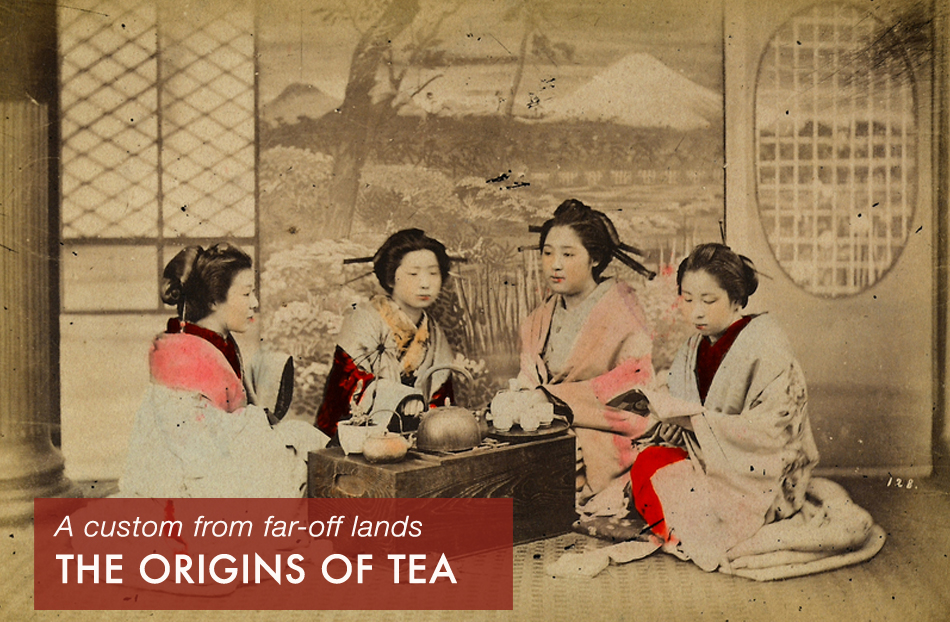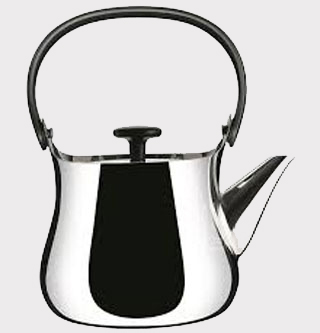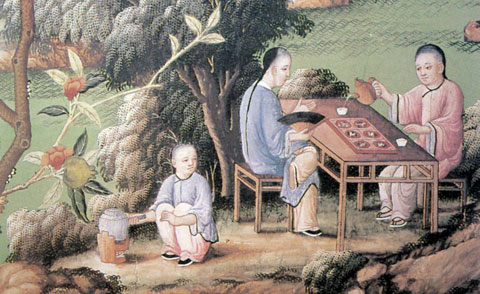

Naoto Fukasawa for Alessi, Cha, 2014
Chinese Tea Tasters, early 18th century. Norfolk, Felbrigg Hall
Top: Women taking tea, c. 1890, photography by the School of Yokohama. Florence, Raccolte Museali Fratelli Alinari
Tea is an ancient drink, which was appreciated in China as early as the 6th century. It is made from the leaves and shoots of the Camellia sinensis, a shrub originally from South-East Asia. Spreading to Japan in the 12th century and throughout the rest of Asia in the 16th century, tea arrived in the west in the 17th century thanks to Portuguese and Dutch merchants. Methods for preparing tea changed over the course of time, with a succession of three different methods being developed in China: boiling, whisking and infusion, identified by the imperial dynasties during which one prevailed over the others. During the Tang dynasty (7th–10th century A.D.), when tea became China's national drink, the leaves of the plant were dried and then pressed to form hard cakes, which were easy to transport. A small quantity was broken off from the block, then crushed in a mortar and boiled in water with other ingredients such as salt, ginger, orange zest, milk and sometimes onion. From the 10th century onwards, during the Sung dynasty, the drink was refined and began to be prepared in a new way: the leaves were crushed and reduced to a fine powder, which was placed in a bowl with hot water and beaten with a bamboo whisk. The very precise ritual of this style of making tea still survives in part today in the Japanese tea ceremony. The production and preservation of loose tea leaves became established during the Ming dynasty, in the 14th century. The drink was made by infusing the leaves in hot water, according to the method we still use today. It was during this period that the porcelain teapot became an indispensable accessory and was accompanied by white cups made from the same material, ideal for exalting the colour of the beverage. In Europe, elegant 18th-century tables often also featured beautiful porcelain tea caddies for storing the leaves, in addition to saucers, cups and teapots.

